A Personal Take on the Tudor Black Bay Pro Polar, From a Fan of the Explorer II
Could it be the reasonably-sized, vintage-looking Explorer II that Rolex doesn't want to give the fans...?
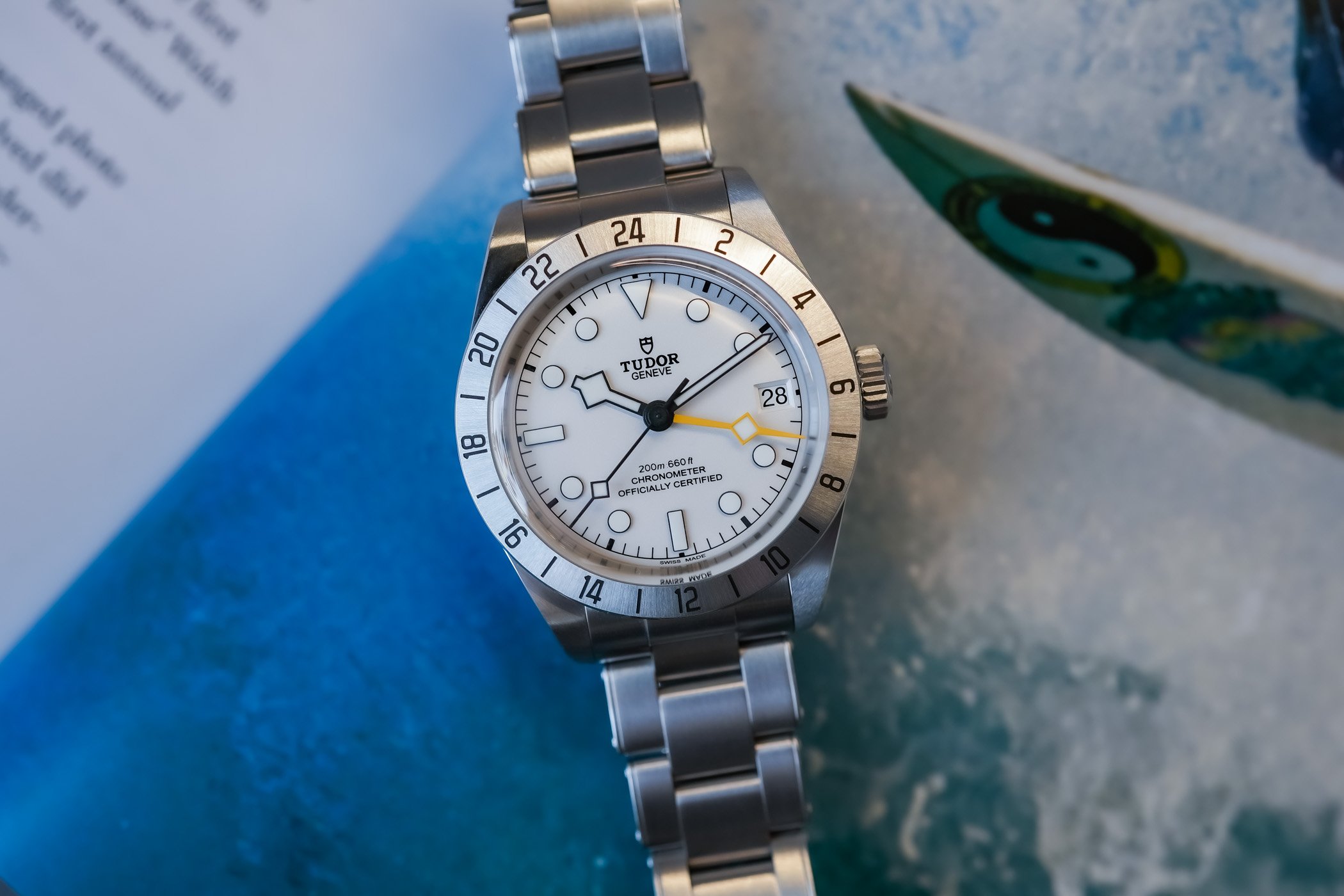
Here, at MONOCHROME, we write about watches. That’s our job. However, before that became what we do on a daily basis, we all shared a sheer passion for watches, with, of course, our personal preferences. Our founder, Frank, is well known to be a fan of independent watchmakers and monochromatic watches (obviously…) I, for instance, have a strong interest in timeless sports watches – the icons of the industry – and chronographs with a vintage flair. One watch in particular has always been one of my absolute favourites, the Rolex Explorer II, in particular the neo-vintage 5-digit references, and the polar versions. So when Tudor announced the Black Bay Pro with Opaline dial earlier this year, which we’ll nickname the Polar BB Pro, my expectations were high.
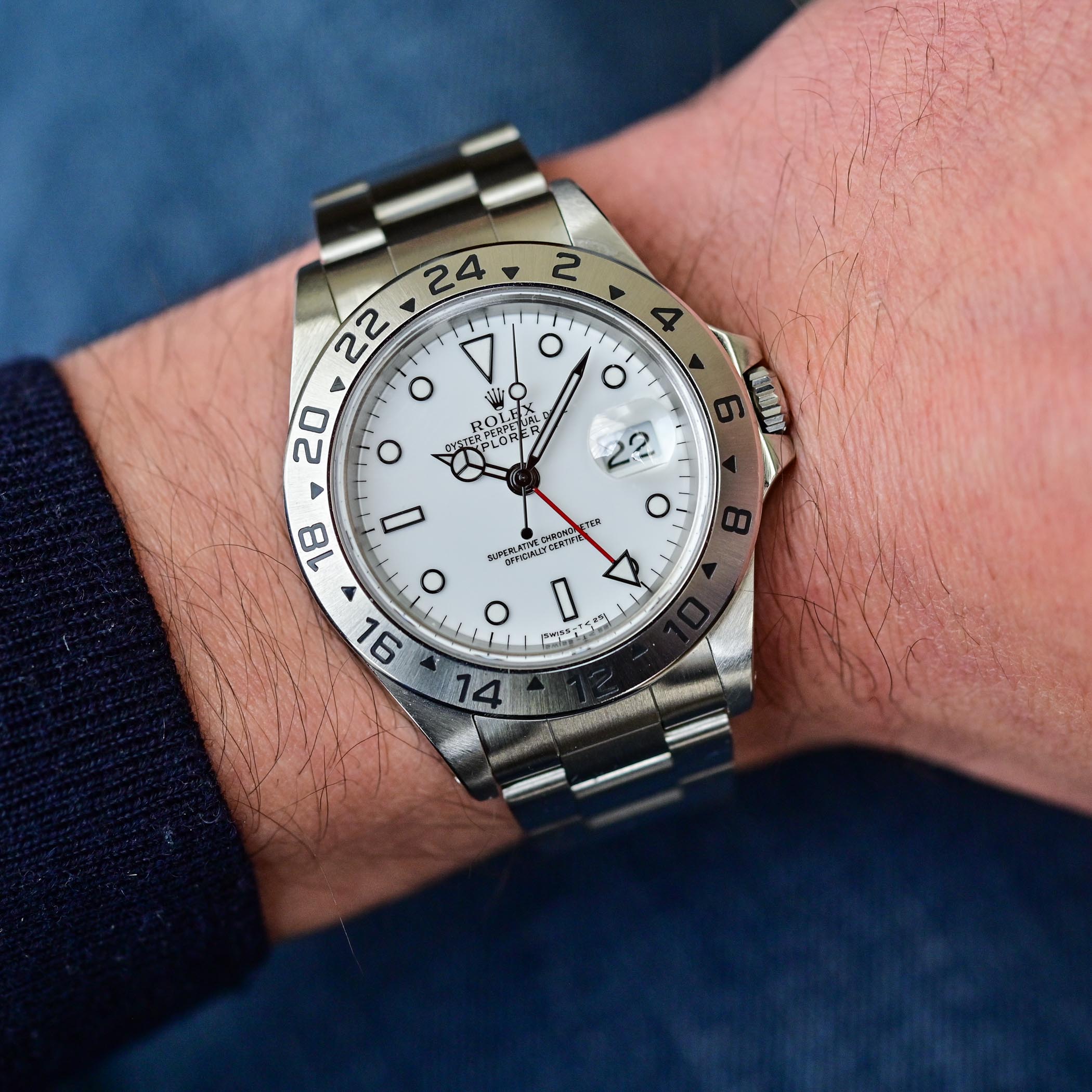
Looking at the collecting community and myself for that matter, the classic Explorer II – understand by that what we call youngtimers or neo-vintage watches – seems to be on the rise lately, with strong interest from younger collectors. In particular, the references 16550 (1985 – 1988) and 16570 (1989 – 2010) with white “polar” dials. It is a watch I own and cherish, and it has been used as the illustration for this in-depth article. This, however, isn’t true for the modern versions of the Explorer II, namely the references 216570 (2011 – 2021) and 226570 (as of 2021). This is purely personal, but I don’t like these watches. I find them too large, too bold. They lack refinement and discretion, as the numerals on the bezel, the hands and the markers are way too large. And if you listen a bit to the crowd, you’ll hear that many actually wish for the return of a classic Explorer II in a thinner, smaller 39-40mm case, with a more subtly designed dial, and maybe some retro touches… But Rolex doesn’t give us that. That being said, some like the 42mm versions of the Explorer II, and this absolutely fine. To each his own.
There are many reasons why I love the neo-vintage versions of the Explorer II. First, while this is a true instrument watch, meant to be used and abused, it is also a fairly refined watch with rather compact dimensions – 40mm x 12mm. I particularly love the mix of retro-styled elements with the peace-of-mind offered by modern elements, such as the solid links of the bracelet, the modern-ish movement with true GMT function and the presence of a sapphire crystal. And if correctly maintained, this is a watch that has proper water-resistance and a virtually indestructible movement. And yes, the white “polar” dial is the cherry on the cake, the element that makes it unique in the Rolex lineup, giving it a unique flair compared to a catalogue filled with black dials.
When Tudor, in 2022, released the Black Bay Pro with a black dial, I was very pleasantly surprised. More compact than an Explorer II, equally well equipped (true GMT, even stronger WR, T-fit micro-adjustment clasp) and with a rather cool mix of vintage elements with modern features. The black dial was (too) expected, and the vintage-toned hands and markers, however, didn’t do much for me. So when Tudor presented this year at Watches and Wonders the Opaline version (let’s call it Polar…) of the Black Bay Pro, my expectations were high. A first look at the official images already made a strong impression, only to be confirmed when handling the watch. It feels like Tudor is giving the fans the Explorer II Rolex doesn’t want to give us. And Tudor is very honest about it. This Black Bay Pro, black or white, is its version of the watch first designed with mine explorers or speleologists in mind – yes, that’s niche to the max… But that was the very reason why the Explorer II was created in the first place.
This Tudor Black Bay Pro Polar or Opaline is all about the dial. The rest, literally everything else, is identical to the original black edition of 2022. For better or worse… As such, we’re looking at a watch that blends classic Black Bay features with additional elements of a 24-hour exploration watch. Let’s start with the case, which retains its 39mm diameter and 47mm lug-to-lug, both dimensions that are close if not smaller than a 5-digit Explorer II. Great…? Not entirely. As said, a 5-digit Explo II is about 12mm in thickness, and a modern 42mm reference 226570 has been measured at 12.5mm – both without including the cyclops over the date. I wouldn’t call this thin, but considering the complication and the overall robustness of the watch, it is fairly decent.
Now, the Black Bay Pro has always been blamed for its thickness, measured at 14.6mm. We have to take into account two things. One, the watch is 200m water-resistant. Second, there’s a domed sapphire crystal, which accounts for at least a millimetre. But above all, it’s not only the thickness that causes discussions, it’s the actual shape of the flanks, which are straight and high – and the polished finish doesn’t help either. Common to most early editions of the Black Bay, this issue has been corrected in recent versions – BB 41mm, BB58 – with shorter flanks and more pronounced “bubble effect” on the caseback. And if you compare the BB Pro with the BB 58 GMT, you’ll see that Tudor can make a robust GMT watch measuring under 13mm. I guess we’ll have to wait for the next generation of Black Bay Pro in order for the thickness and shape issues to be fixed.
That being said, and while I can’t argue against the numbers, some other brands don’t do better. In fact, many are worse on this topic (I see you, Omega…) On the wrist, this translates into a watch that has a certain heft and presence, yet with comfort. Seen from above, the Black Bay Pro is relatively compact – not too large and fairly short, at least for a watch of that category. The low centre of gravity, thanks to a bracelet articulation placed far down, and the hardly domed back also help the watch to stay flat on the wrist.
Design-wise, again, there’s no evolution between this polar edition and the existing black model. The case is finished in traditional Tudor fashion, with satin-brushed top surfaces, polished sides and a polished bevel running from one lug to another. The crown is a classic fluted element (no more coloured tube, as in early BB watches) and there’s this glorious fixed stainless steel with a 24-hour scale. This is where Tudor gains points, with thinly engraved numerals, a radial-brushed surface and a layout that’s close to what Rolex used in the vintage Explorer II reference 1655. If you compare this 24-hour bezel with the one found on the modern reference 226570, you’ll see that there’s an undeniable elegance and charm in the way Tudor does it. And I don’t really care about the better contrast and legibility of the one used by Rolex.
Let’s talk about the main element of this new Black Bay Pro Polar, the white opaline dial. As a fan of the Polar Explorer II, I can only applaud the arrival of this colour to the collection. While the dial isn’t identical to what Rolex uses – white lacquered dials, with a glossy effect – this opaline dial has its own charm with a slightly grained, slightly metallic and matte effect. And since the hands and markers are outlined in black – as they should, obviously – the watch not only reads at a glance but also looks fantastic. Sorry, I’m very, very biased here. The yellow 24-hour hand is not necessarily what I would have chosen at first (dark orange would have been my choice) but it looks the part.
There is a modern side to this retro-looking watch, with applied markers made of ceramic blocks, providing a long-lasting luminescent effect. And being part of the BB collection, you’ll find the inevitable Snowflake handset with square lollipop seconds and GMT hands. And with the use of white Super-LumiNova instead of the cream-toned elements found on the black model, the overall watch feels fresher, more purposeful, more technical and (personal) more appealing.
Inside the Tudor Black Bay Pro Polar is the same movement as the black edition and the Black Bay GMT, namely the Calibre MT5652 made by long-time partner Kenissi. This automatic movement is chronometer-certified by COSC (no METAS Master Chronometer certification yet) and fitted with an anti-magnetic silicon hairspring. Also, the variable inertia balance is held in place by a robust transversal bridge. The movement beats at 4Hz and stores up to 70 hours of power reserve once fully wound by its bidirectional rotor. Regarding the precision, even though COSC standards are between -4 and +6 seconds, Tudor insists on between -2 and +4 seconds’ variation in its running when watches are completely assembled. A well-known movement, which is fitted with a practical “true GMT” function. Its 7.52mm height certainly contributes to the overall thickness of the watch.
Just like its black sister, the Black Bay Pro Polar is offered on a 3-link rivet-style steel bracelet, closed by a folding clasp with T-fit micro-adjustment (up to 8mm). A hybrid rubber and fabric strap with steel folding clasp, or a black fabric strap with yellow band, are also available.
Thoughts & Price
What do I think about the Polar BB Pro GMT? Well, I really like this watch. It feels to me like the watch Rolex should have in its collection, instead of its current 42mm Explorer II. It is perfect, mostly regarding the thickness and the shape of the flanks, and Tudor should soon revamp it with the movement found in the Black Bay 58 GMT, and thus deliver a 12.5mm version. On that, I agree with the crowd. That being said, I can live with the watch as it is now and I do think that the look, the size, the polar dial and the list of features offered are hard to beat.
Priced at EUR 4,410 on steel bracelet or EUR 4,080 on strap, it’s also substantially more accessible than a new Explorer II, priced currently at EUR 10,050. It’s also more accessible than most 40mm white reference 16570 models on the market, as later models with SLN dials currently trade around EUR 7,000. So, if you can go beyond the prestige of the name printed on the dial, I’d say that this Tudor Black Bay Pro Polar is a very serious option to consider. And this white opaline dial changes drastically the watch, to the point of feeling entirely different from its black sibling.
For more details, please visit www.tudorwatch.com.

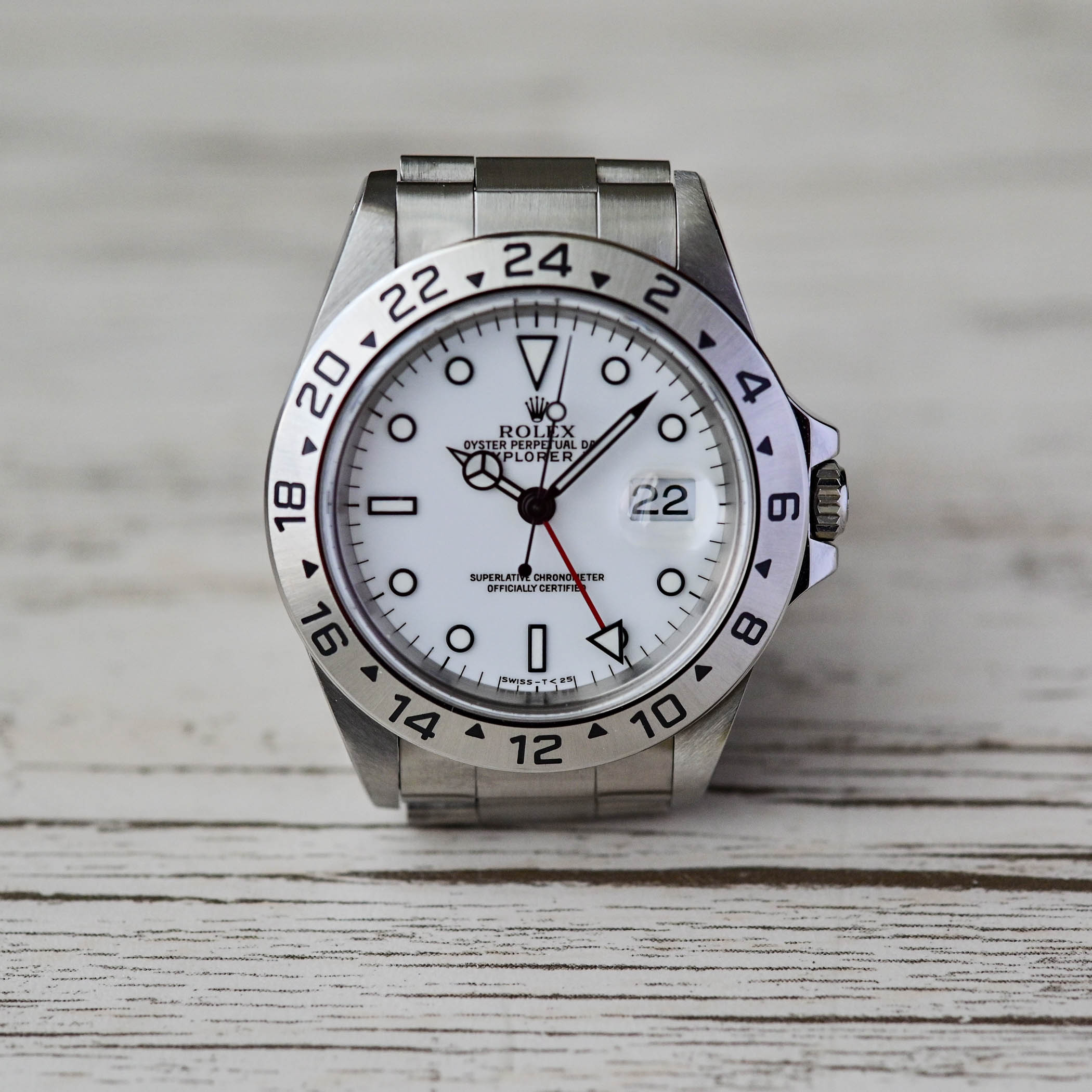
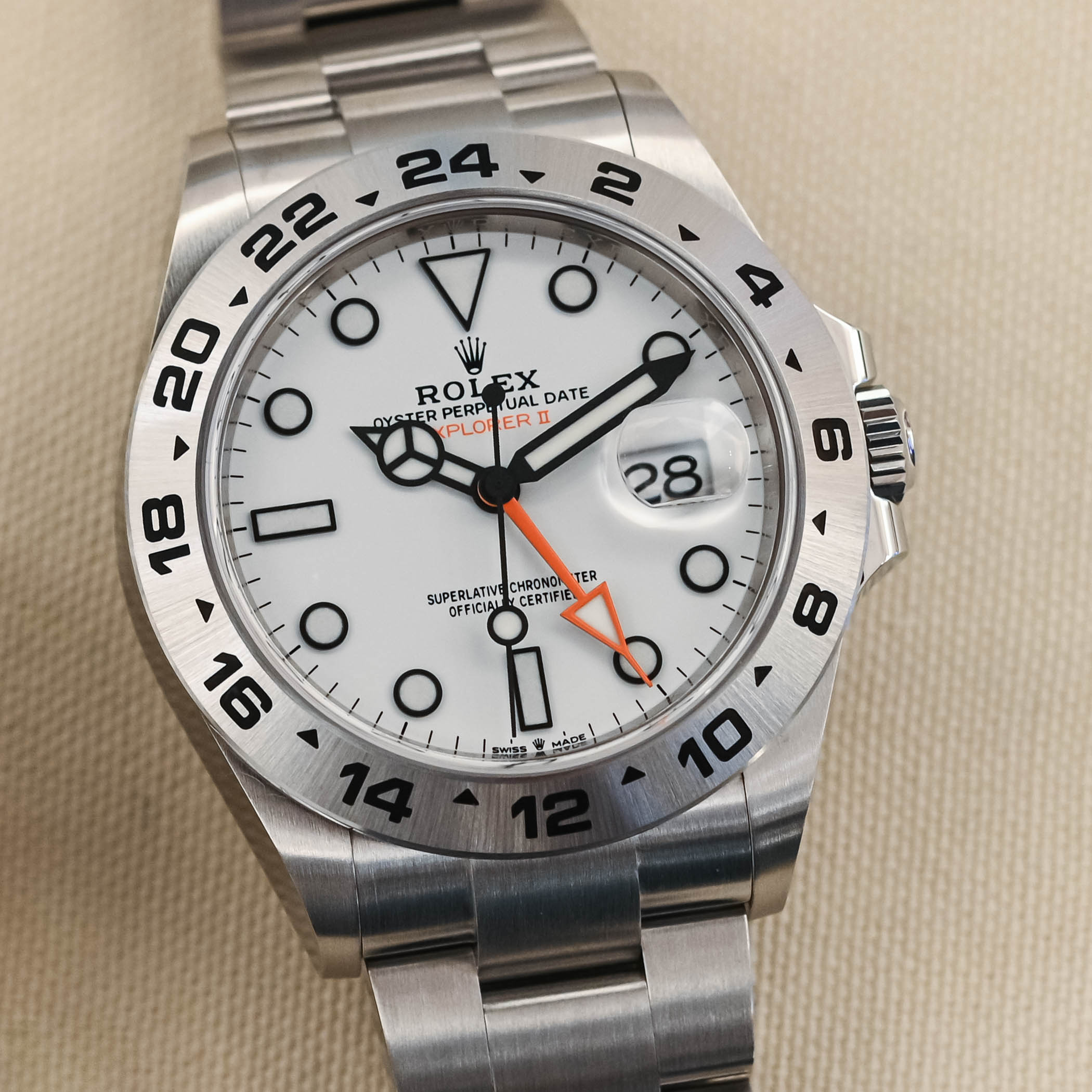

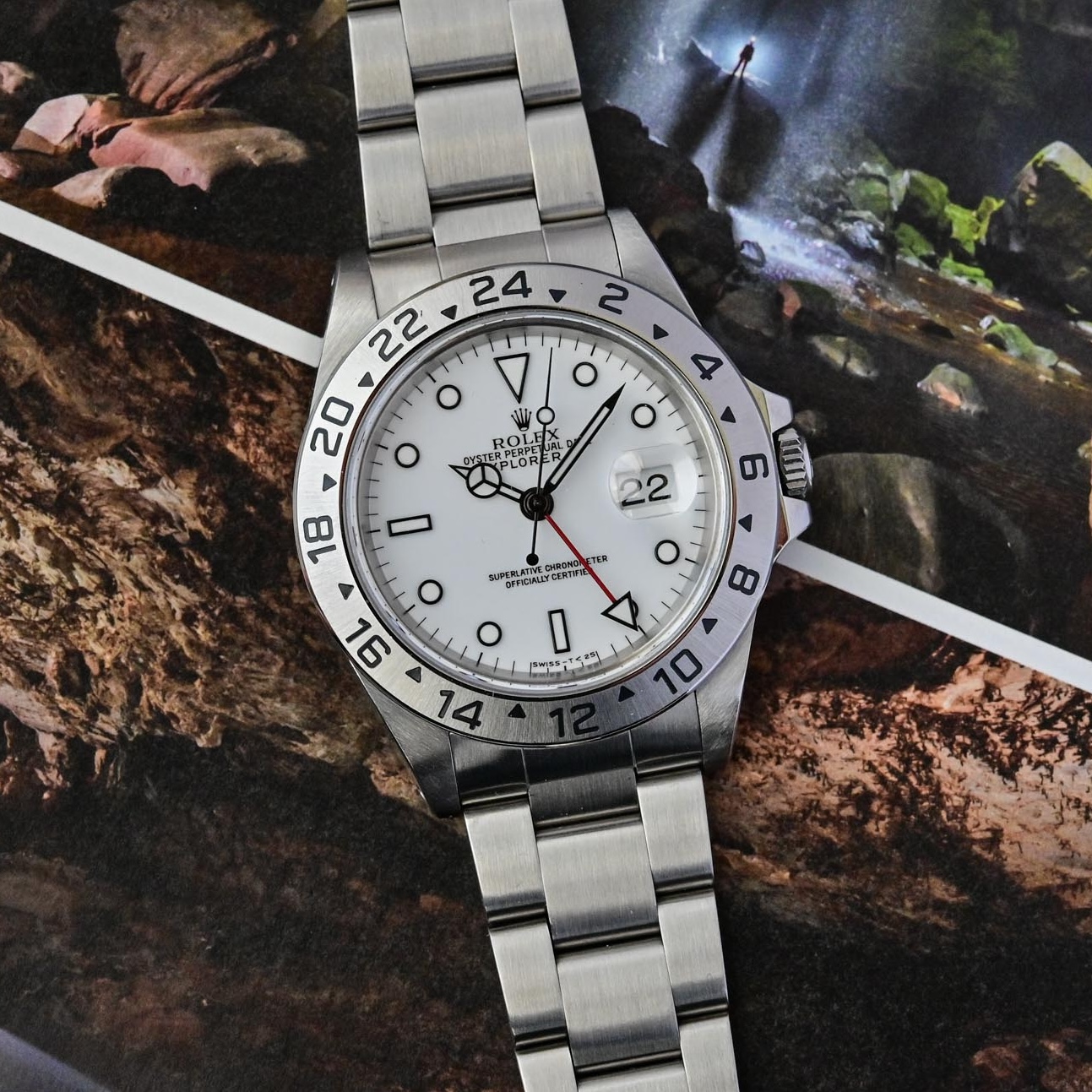
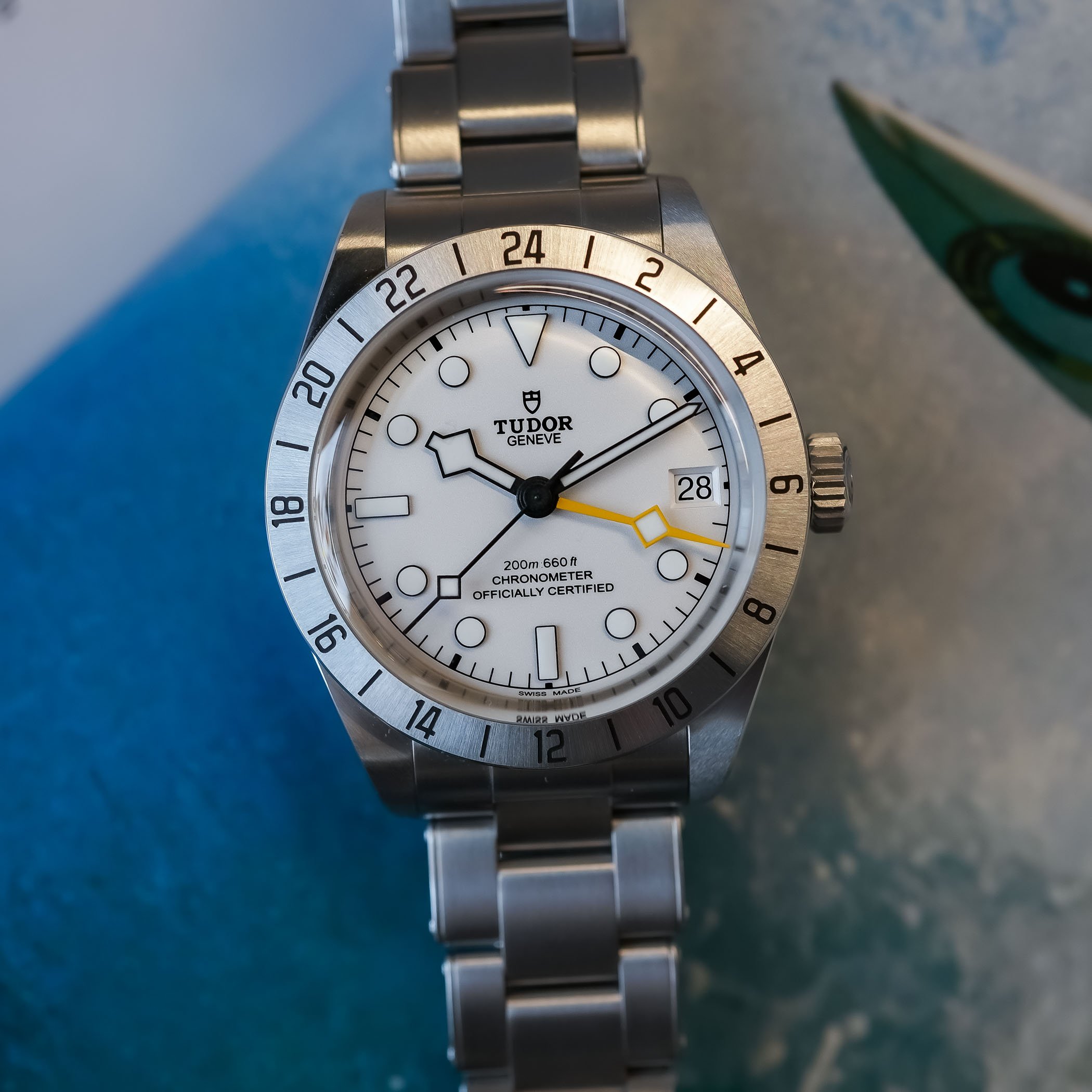

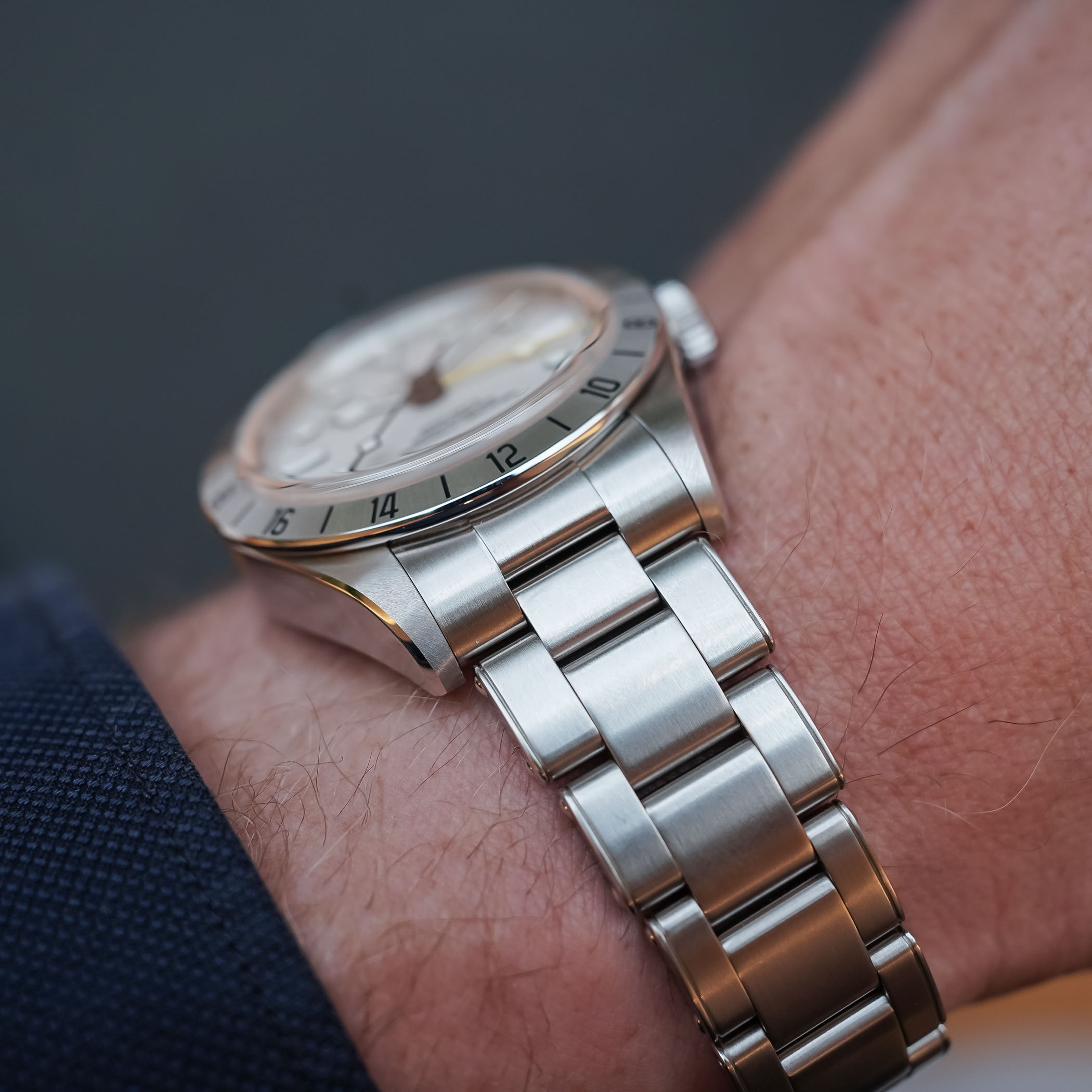
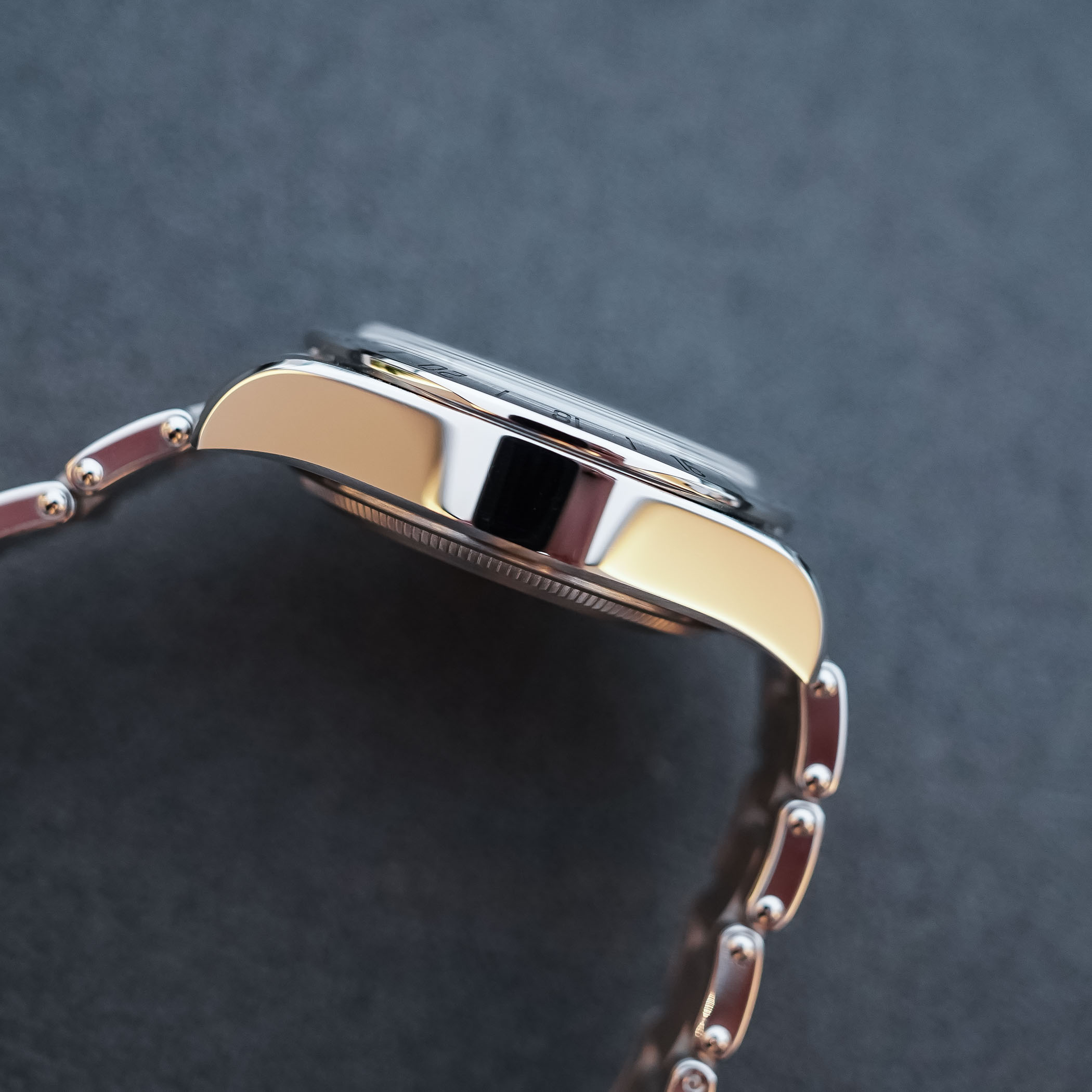

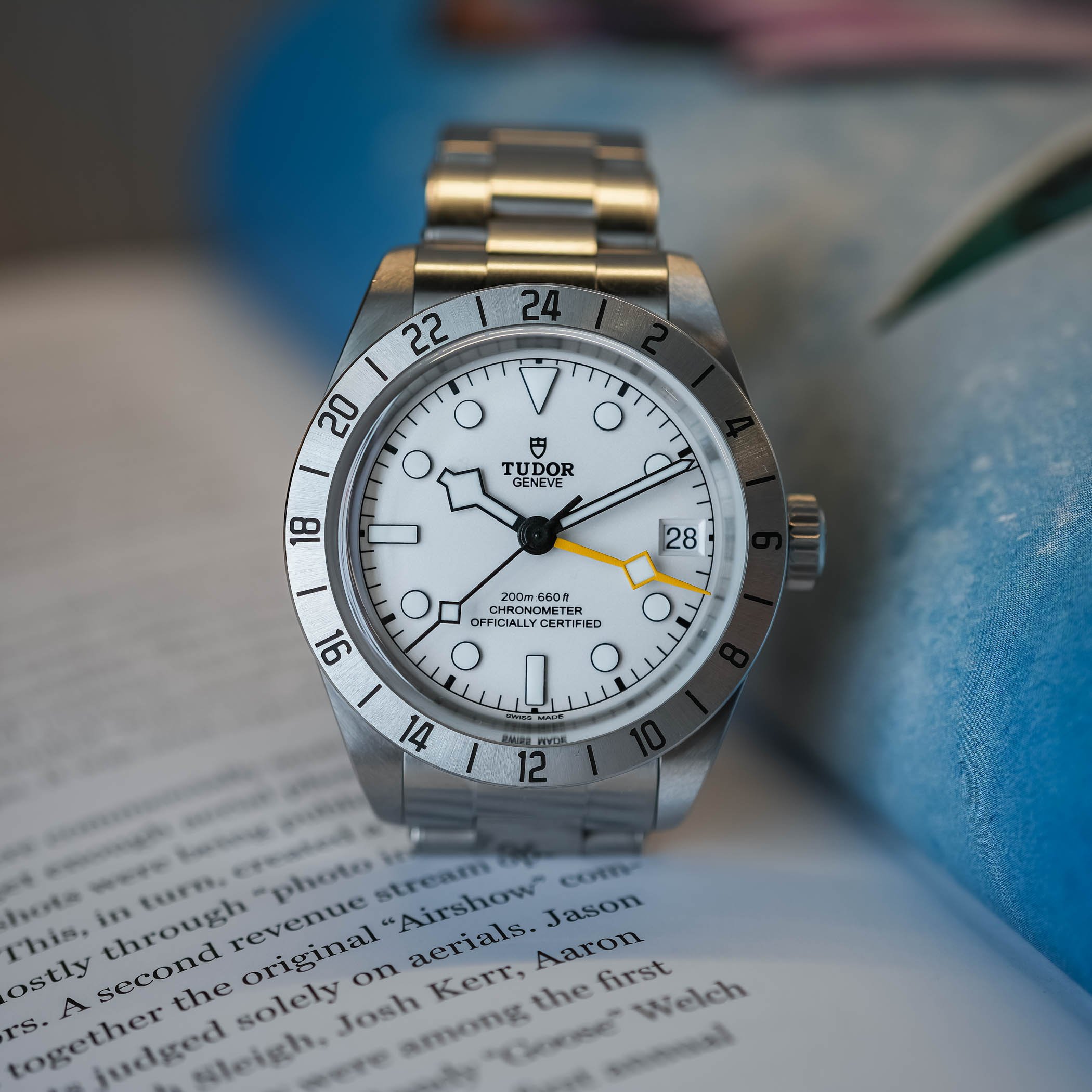
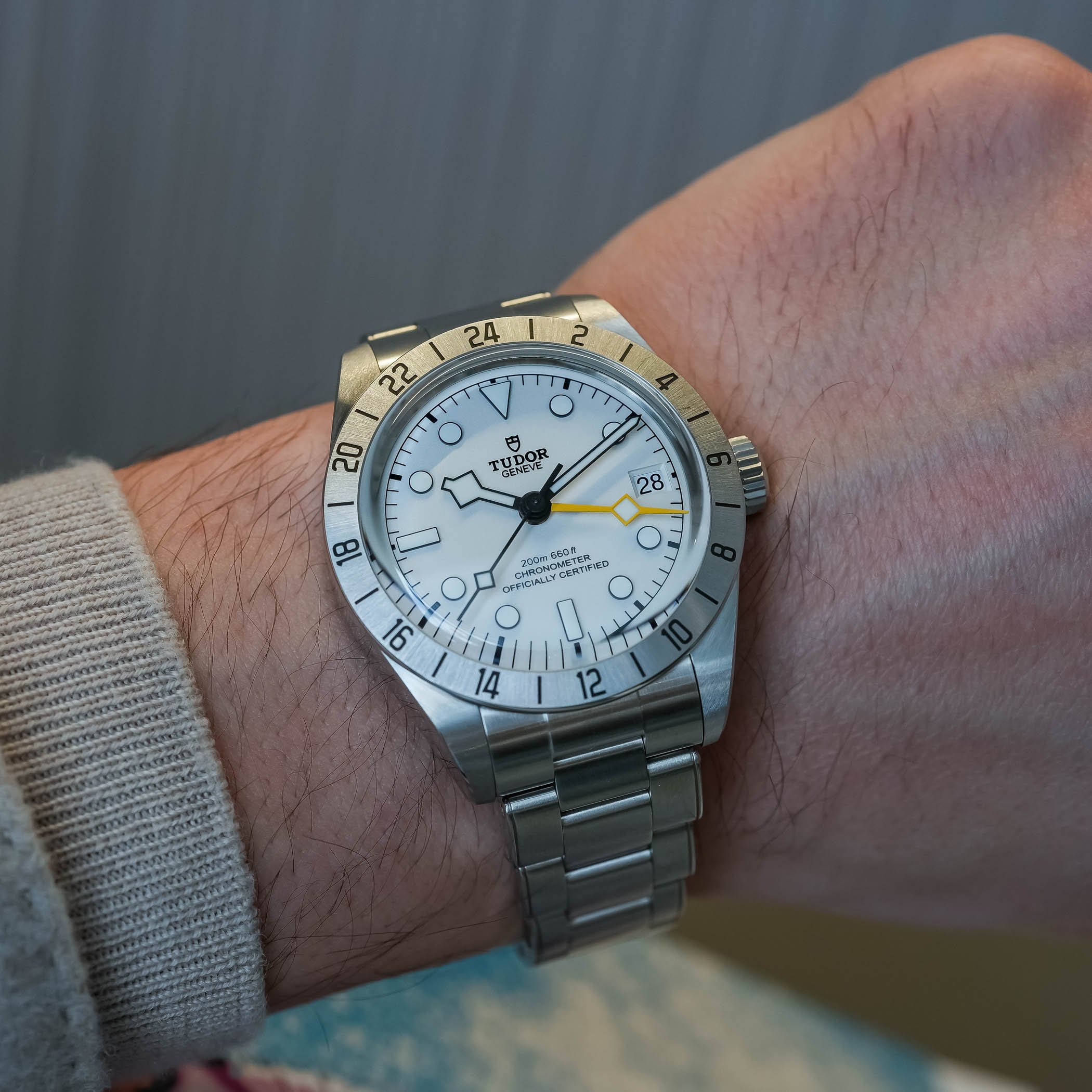

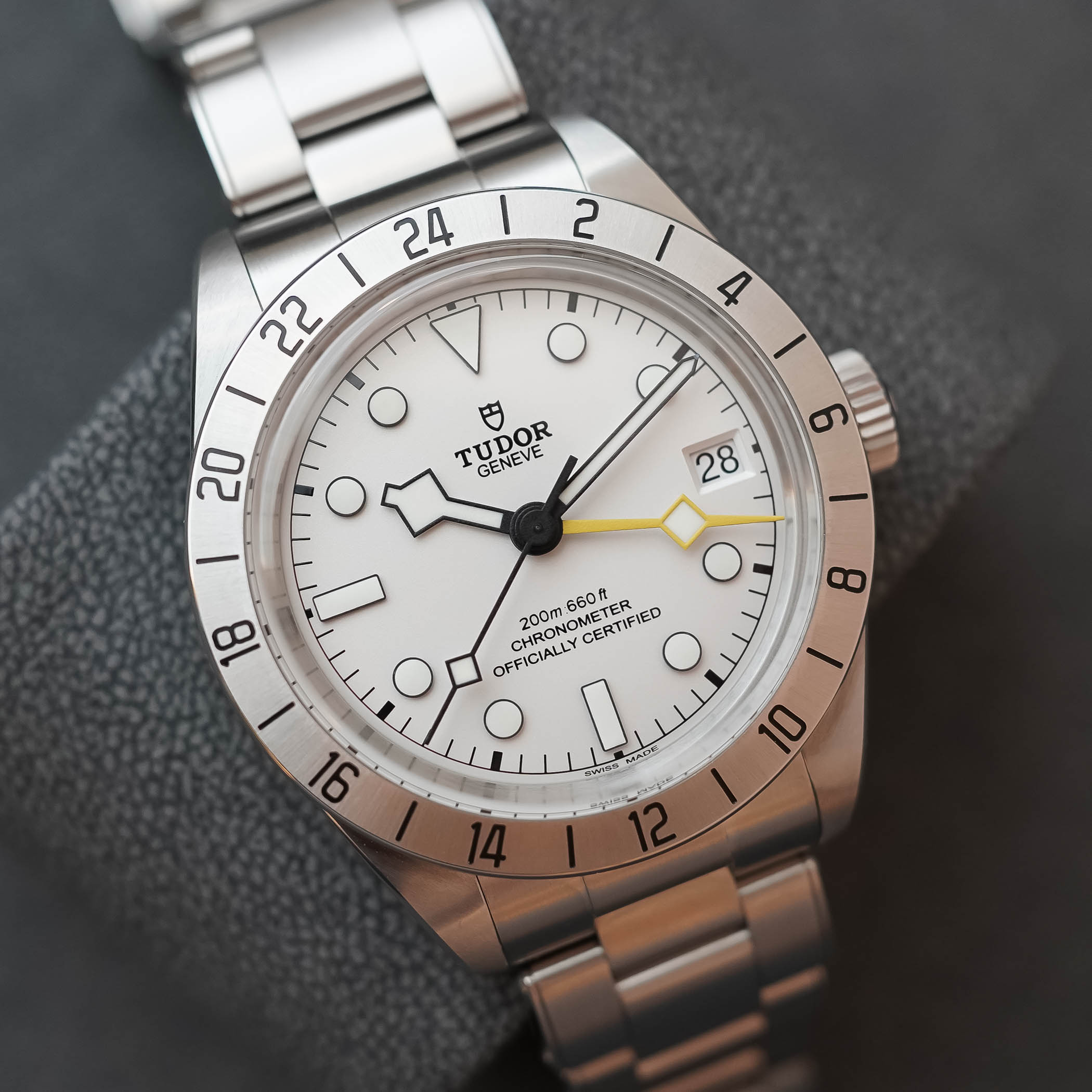
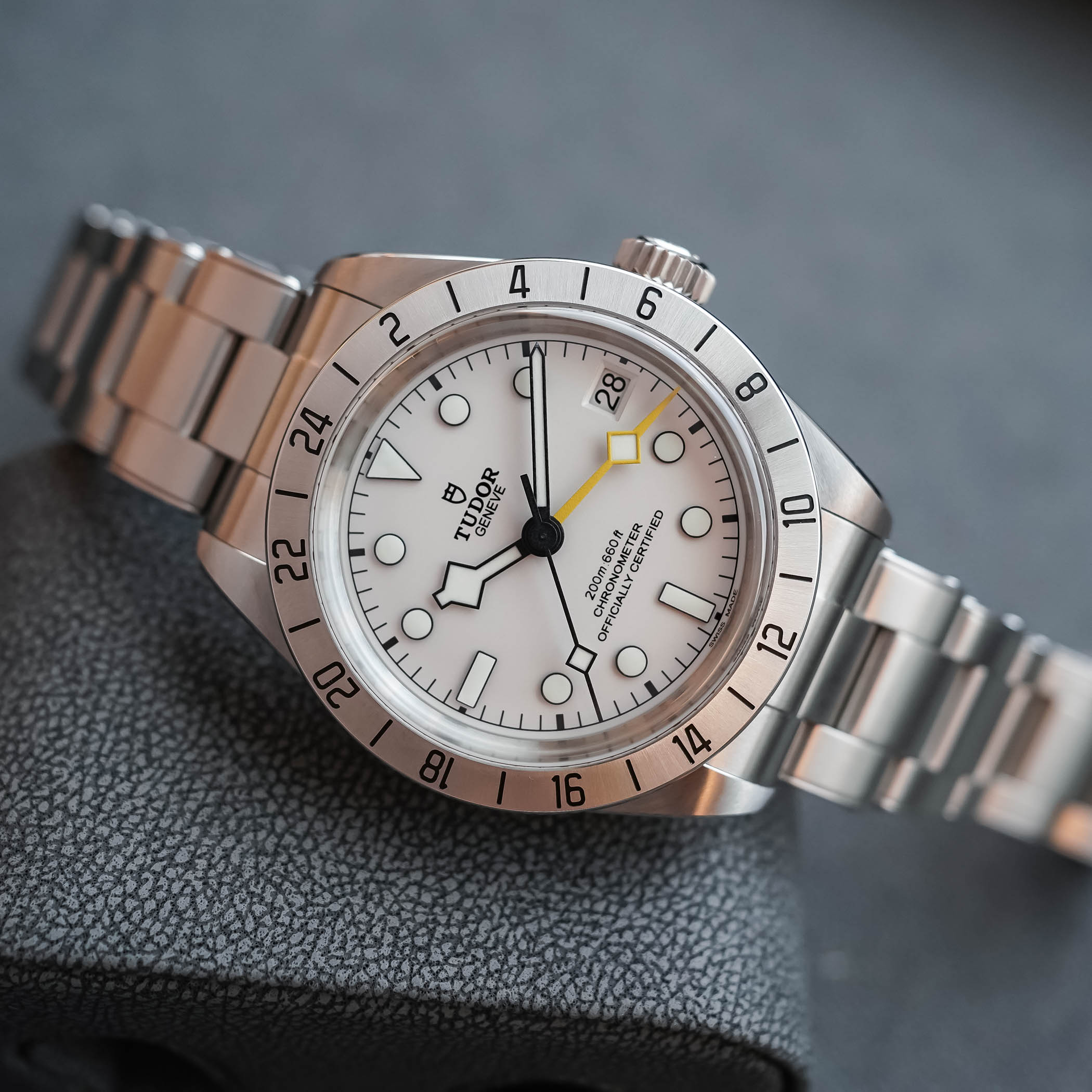





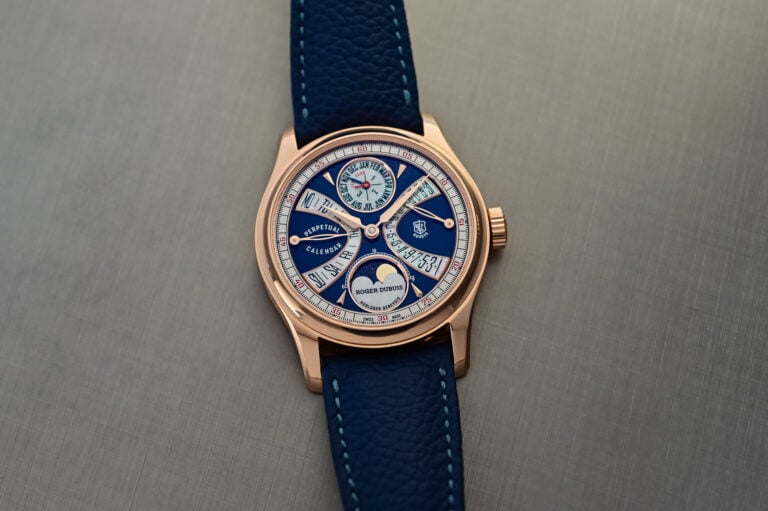
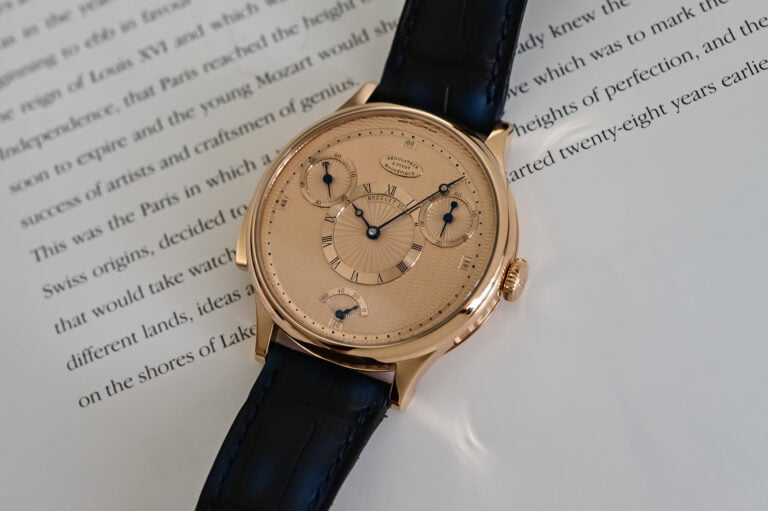
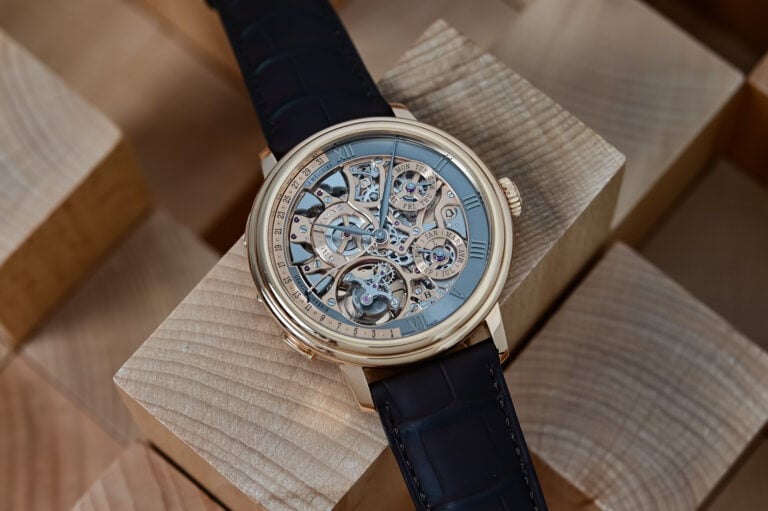
5 responses
Sorry the Tudor Black Bay Pro ‘Polar’ doesn’t hold a candle to the 226570 (nor its immediate predecessor), no matter how much someone might want it to be. Just isn’t. If you don’t want to spend 226570 money, I guess maybe, but not the same level or finishing etc.
…and both watches are total trash compared to my 126720VTNR.
Ok, now someone outdoor me.
I have the BB Pro with black dial. Even I love Explorer II Polar (my grail watch) and generally white dials above black, I should prefer the black one above white in that particular watch, any time. It has a vintage vibe and yet so fresh! About the thickness, I don’t bother at all. As a matter of fact, Even I prefer slimmer watches*, in that watch it is more beautiful.
* I own Nomos Club neomatik white dial 37 in 8.2mm and Zenith Elite in 7.8mm.
The Tudor Black Bay Pro white is:
– aesthetically pleasant
– cartoonish
– actually not “polar” but “opaline”. Why is it called Polar – anyone?
– too perfect in terms of looks but the perfection doesn’t extend to thickness which annoys
– too thick. (Sorry, it does matter)
– soft and more feminine. Can be worn by women easily.
– in my view, will get boring within 12-18 months.
The Explorer II line is:
– masculine
– no compromises feel
– “polar”- izing (which is good)
– iconic
– Rolex will always hold better value
– has more character
– will never ever be sold
What features of the Black Bay Pro Polar Opaline stand out to you the most?